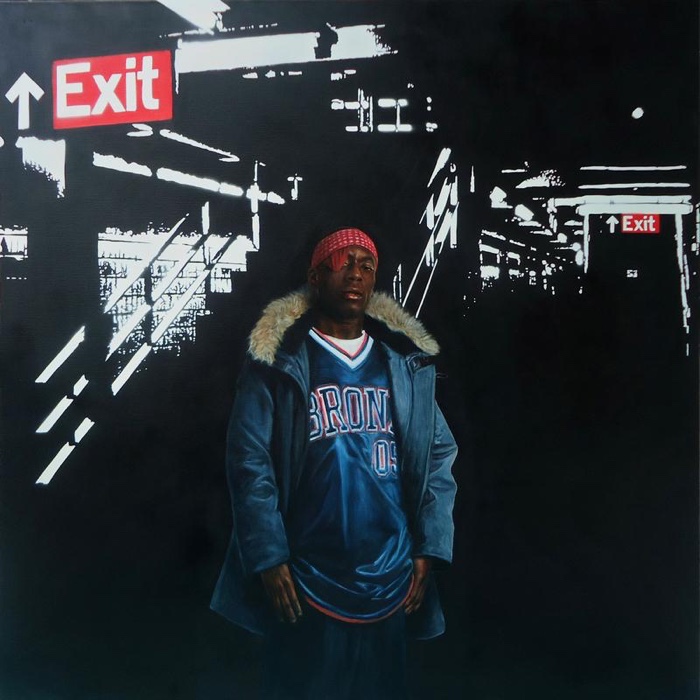While in Rotterdam for the Malware exhibition, i crossed the Museum Park and visited Street Dreams. How Hiphop took over Fashion at Kunsthal Rotterdam.
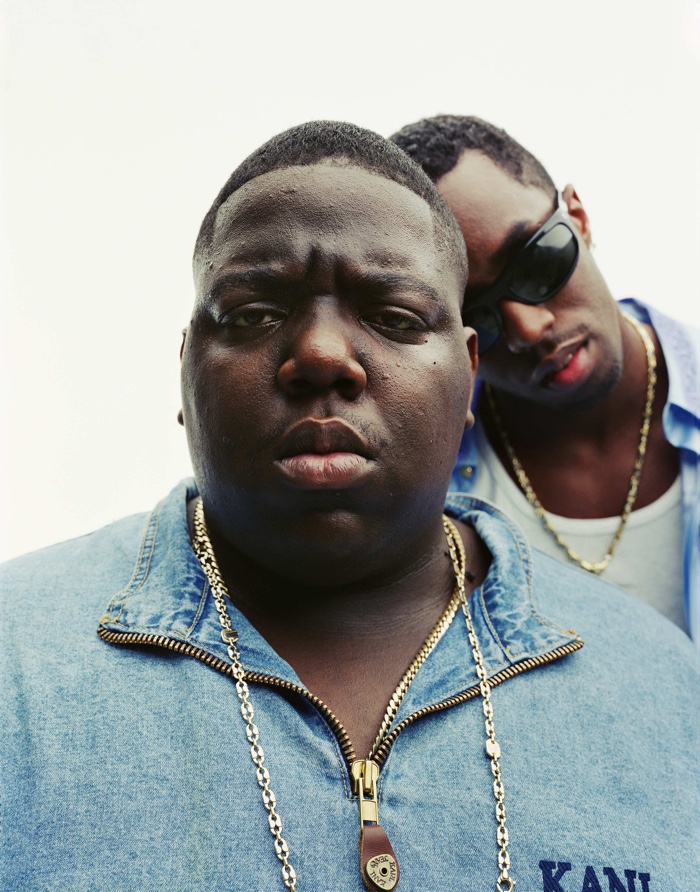
Christopher Wallace (Biggie) & Sean Combs (Puff Daddy), 1996, Cover image VIBE September 1996 issue. Courtesy of the artist and GRIMM Amsterdam, New York
RUN DMC, It’s Tricky, 1986
Hip-Hop is more than a music style, it’s a movement that has left its marks on visual and performative culture. Its influence on fashion is particularly enduring. Sneakers, brash logos, hoodies, oversized clothing, bold gold jewellery and boom boxes on the shoulder. They are all associated with hip-hop and they are still here decades later. Apart from boomboxes. And big logos, unless you’re ironic.
Hip hop is not just in the streets. It’s on catwalks too now. Luxury brands, which used to berate the bootleg culture of hiphop, is embracing some of its ideas and icons. Virgil Abloh, designer of the popular streetwear label Off-White, was named artistic director of Louis Vuitton’s menswear ready wear line last year. Gucci collaborated with hip-hop designer Dapper Dan on a collection back in 2017 (which didn’t prevent the Italian fashion house from selling a blackface sweater a few months later.) Rapper and hip hop producer Pharrell worked together with Chanel and other major fashion houses. I could go on for hours.
Through visual art, photography and video installations, the exhibition ‘Street Dreams: How Hiphop took over Fashion’ show the looks, the codes and the creative force of hip hop, focusing on the origins and underlying philosophy of this street culture.
The exhibition features surprisingly few items of clothing and very little information about the socio-political context in which hip-hop emerged. But it has work by Nick Cave and by Kehinde Wiley. Images by photographers who documented the early years of hip-hop fashion. And of course music. I left the Kunsthal in excellent mood.
I’ll leave you with the works i discovered there:
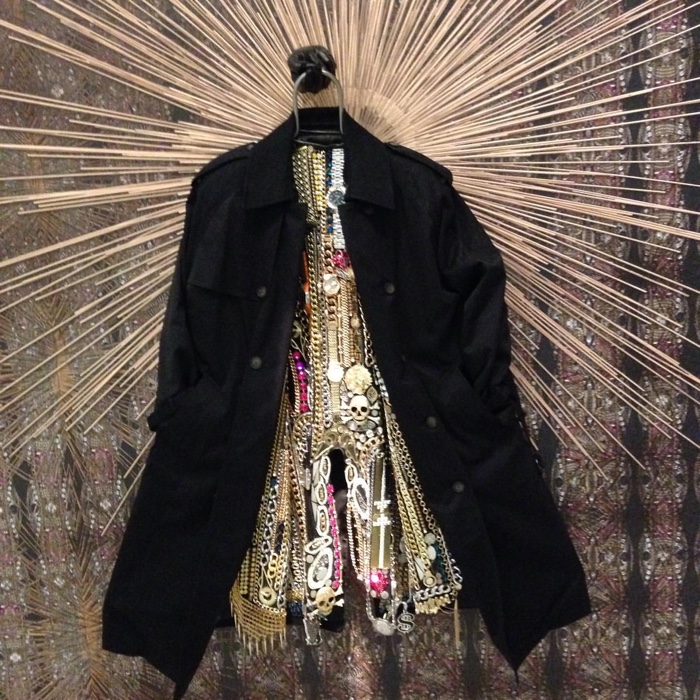
Nick Cave, Hustle Coat
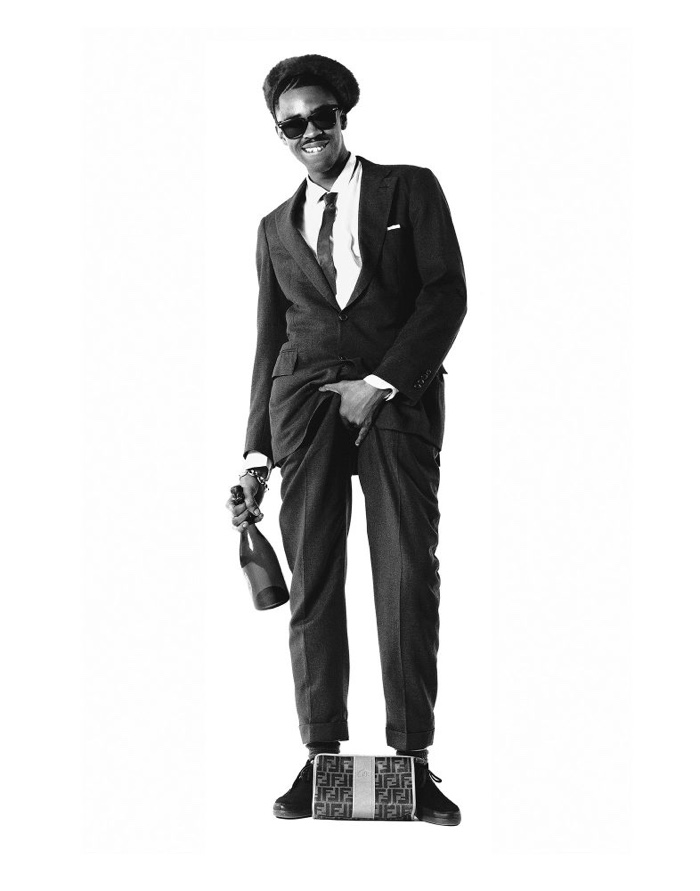
Janette Beckman, Slick Rick, Manhattan, NYC, 1989. Photo ©Janette Beckman. Courtesy of Fahey-Klein Gallery, Los Angeles
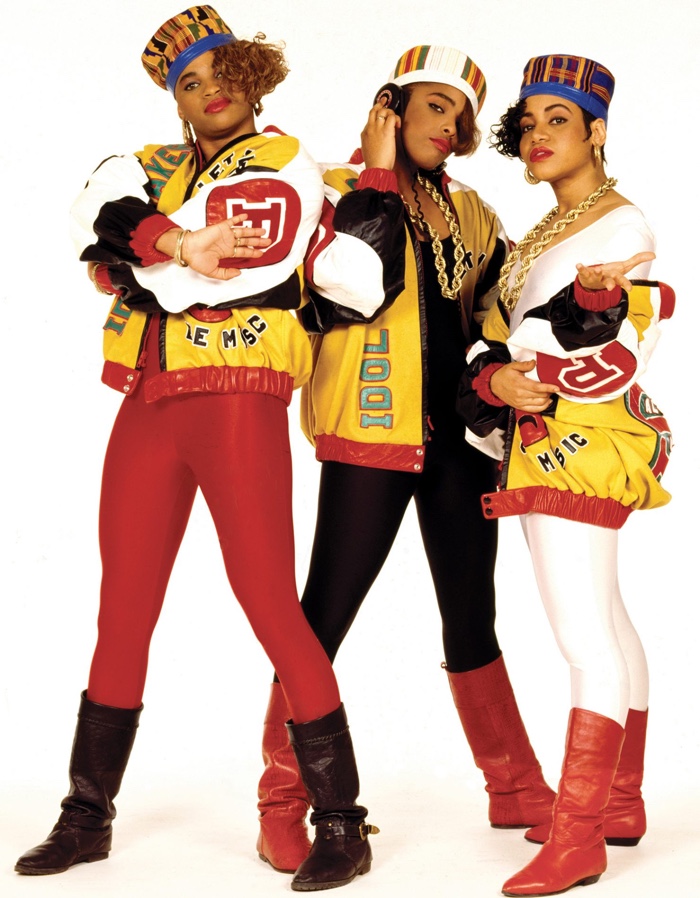
Jannette Beckman, Salt-N-Pepa, NYC, 1987
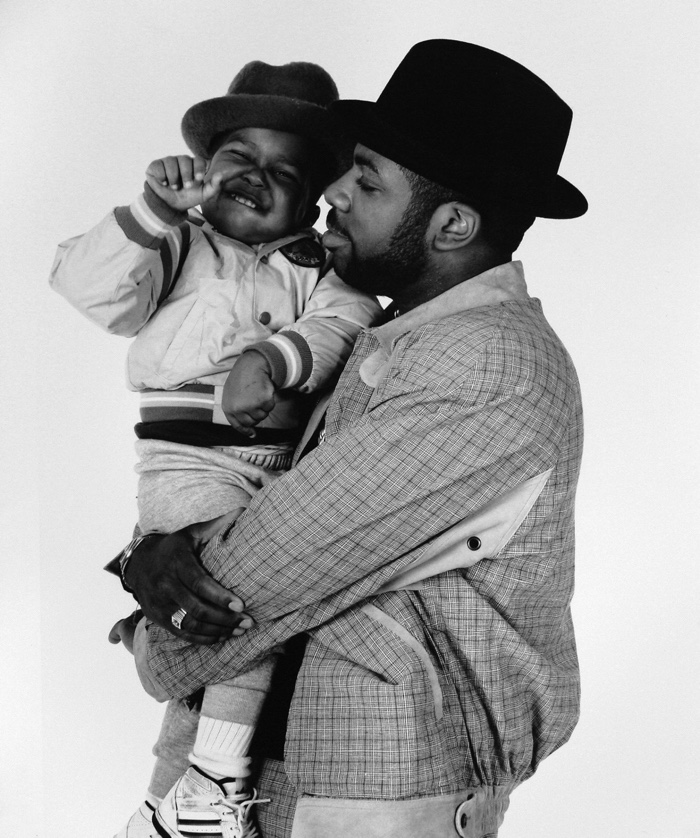
Jannette Beckman, Jam Master Jay, NYC, 1991
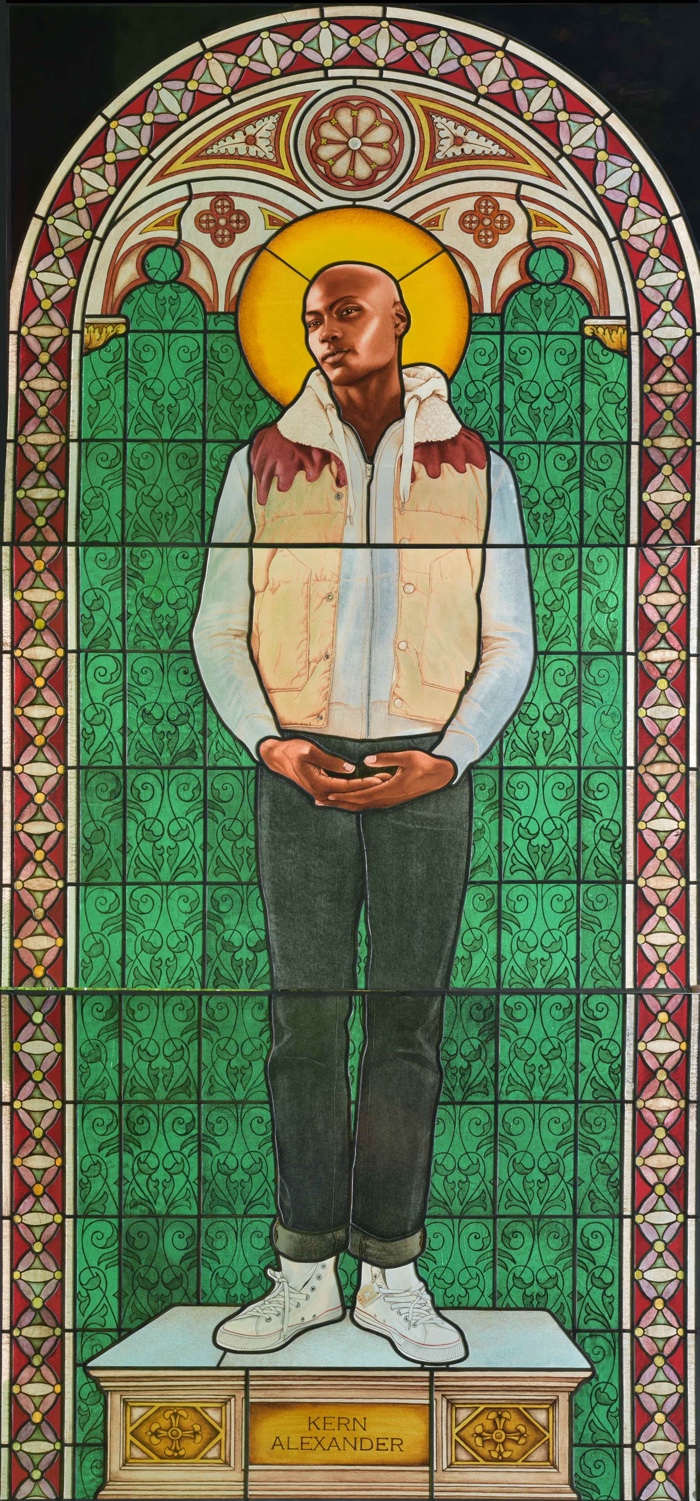
Kehinde Wiley, Saint Amelie, 2014. Courtesy of Templon, Paris & Brussels
Kehinde Wiley is showing one of his monumental works in stained glass. A black young man dressed in streetwear adopts the same pose as the Sainte Amélie that Ingres drew Notre-Dame-de-Compassion Church in Paris. Wiley (who painted the official portrait of Barack Obama) uses the same style and tropes as European artists of the Renaissance but he puts a person of color at the center of the scene, as a modern-day martyr and art history icon.
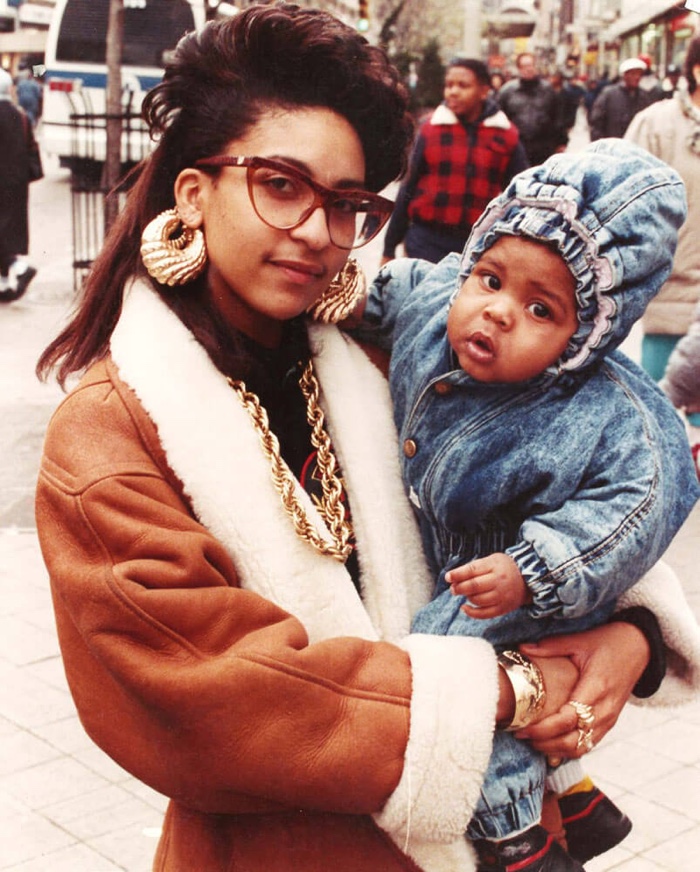
Jamel Shabazz, A Mother’s Love, Brooklyn, NYC, 1987
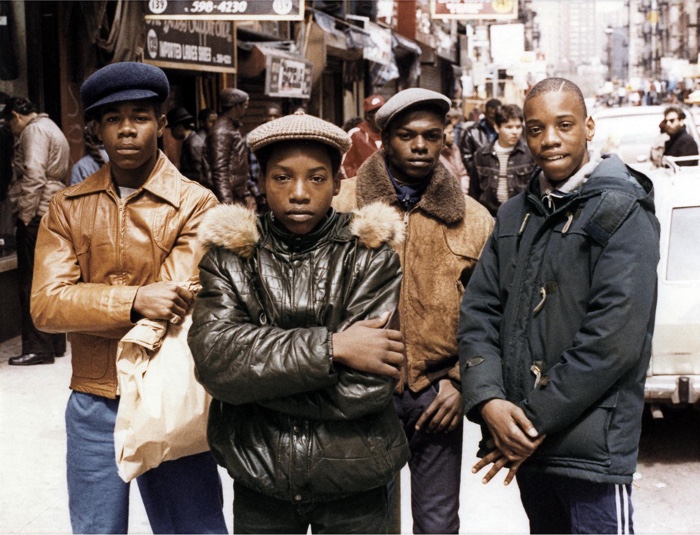
Jamel Shabazz, Back in the Days, Lower East Side, Manhattan, NYC, 1982
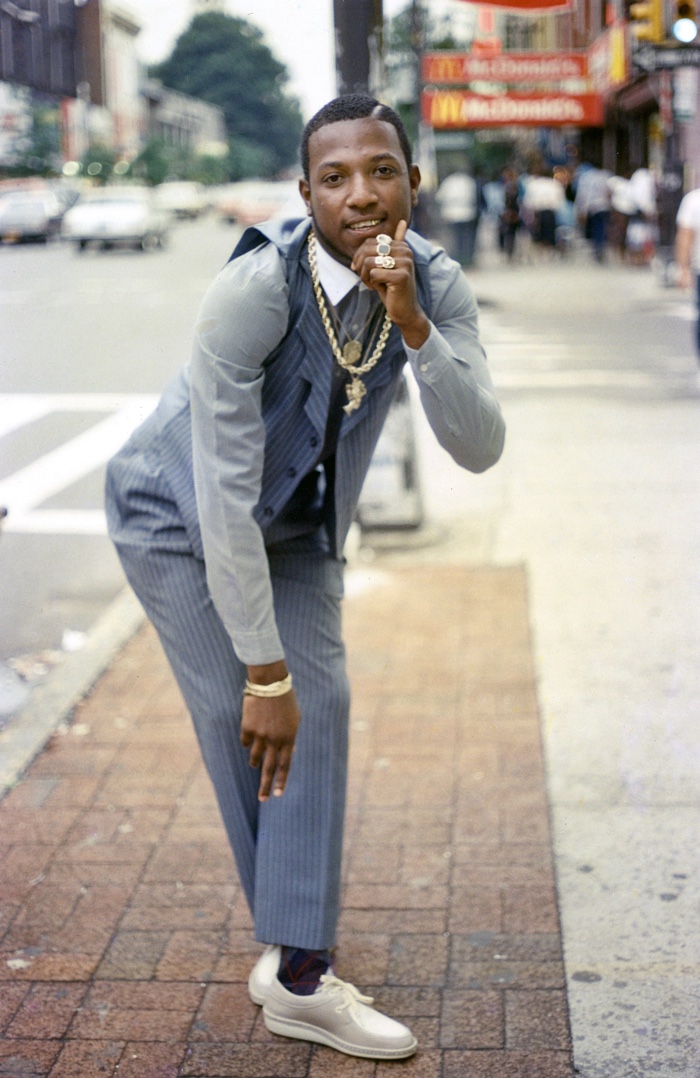
Jamel Shabazz, Rude Boy, Brooklyn, NYC, 1981
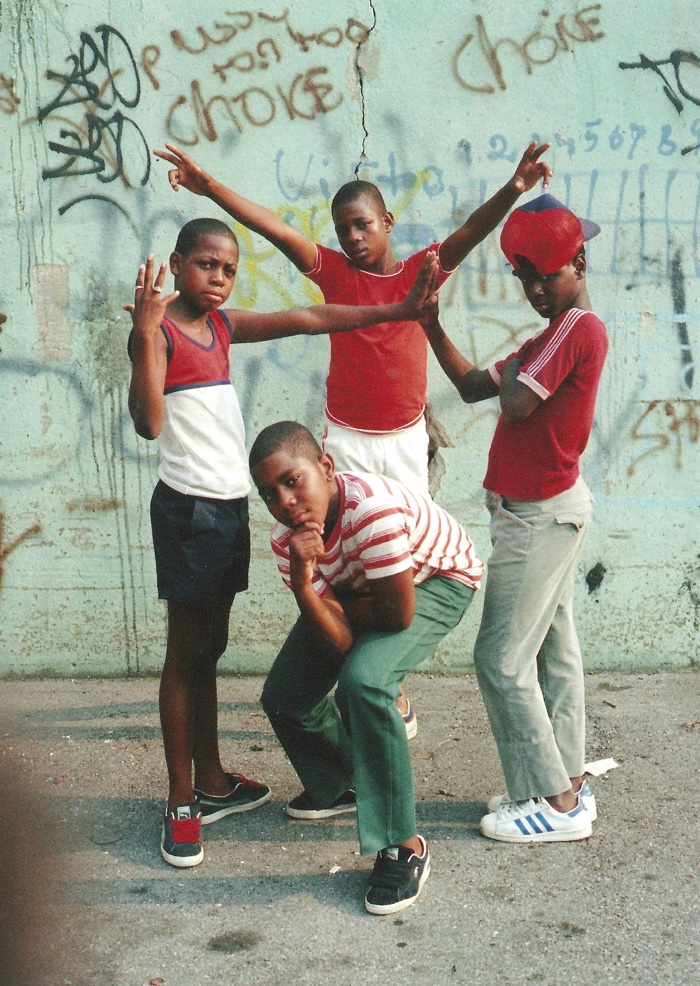
Jamel Shabazz, Young Boys, East Flatbush, Brooklyn, NYC, 1981
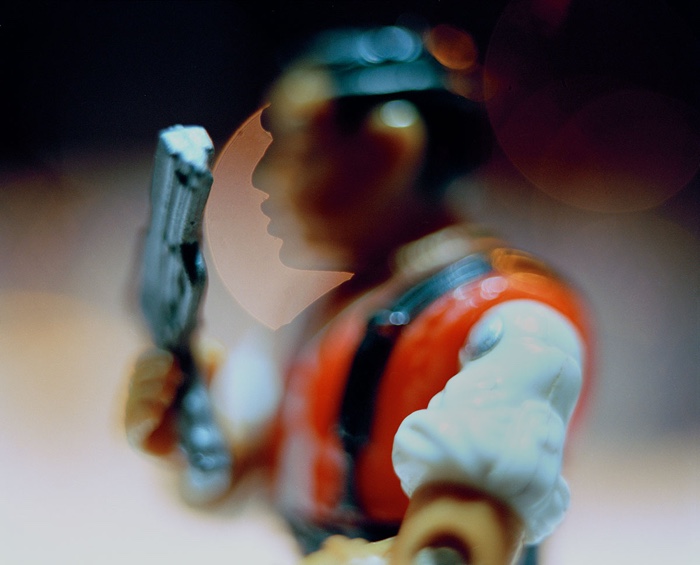
Hank Willis Thomas and Kambui Olujimi, Video still Winter in America, 2006. Courtesy of the artist and Jack Shainman Gallery, New York
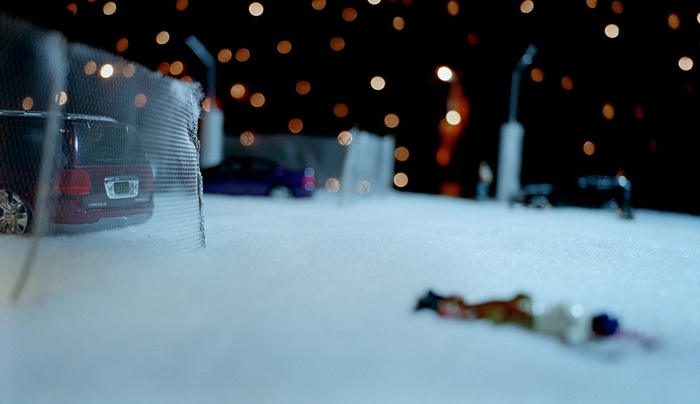
Hank Willis Thomas and Kambui Olujimi, Video still Winter in America, 2006. Courtesy of the artist and Jack Shainman Gallery, New York
The video Winter in America is based on the events leading up to the murder of Songha Thomas Willis, Hank Willis Thomas’s cousin in 2000 in Philadelphia. The story is derived from an interview with the main eye-witness to the crime and notes taken by the victim’s mother during the murder trial. The scenes are recreated using G.I. Joe action figures in stop-motion film technique. The work exposes the breeding and normalization of a culture of violence for young boys who are encouraged to author brutal scenarios before they can even read.
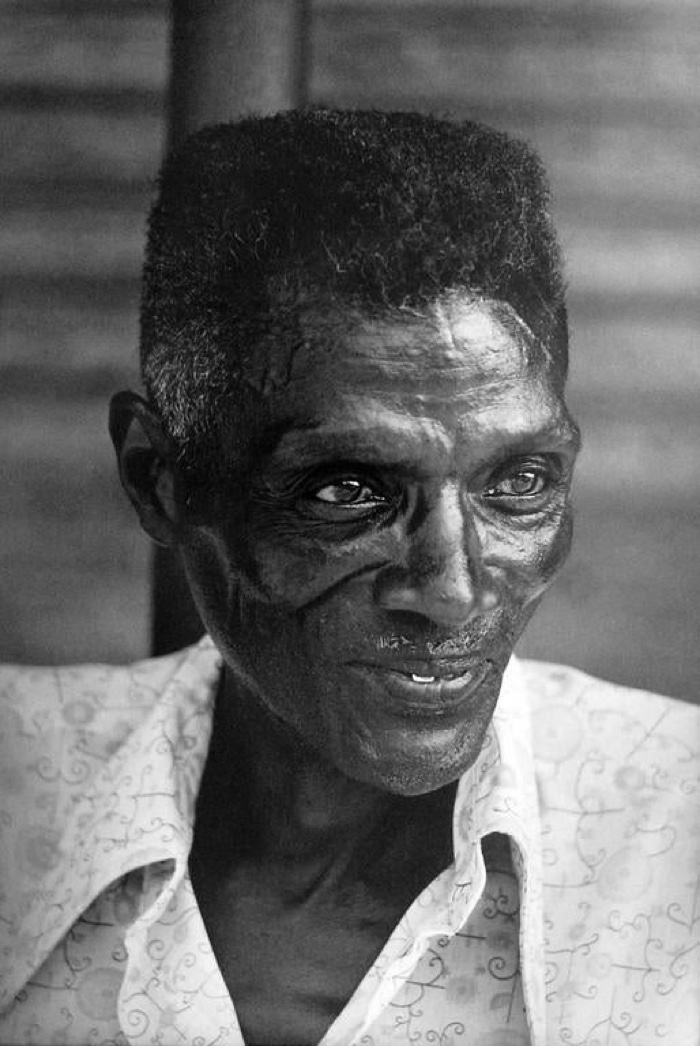
Earlie Hudnall JR., Mr. Shine, 3rd Ward, Houston, TX, 1988
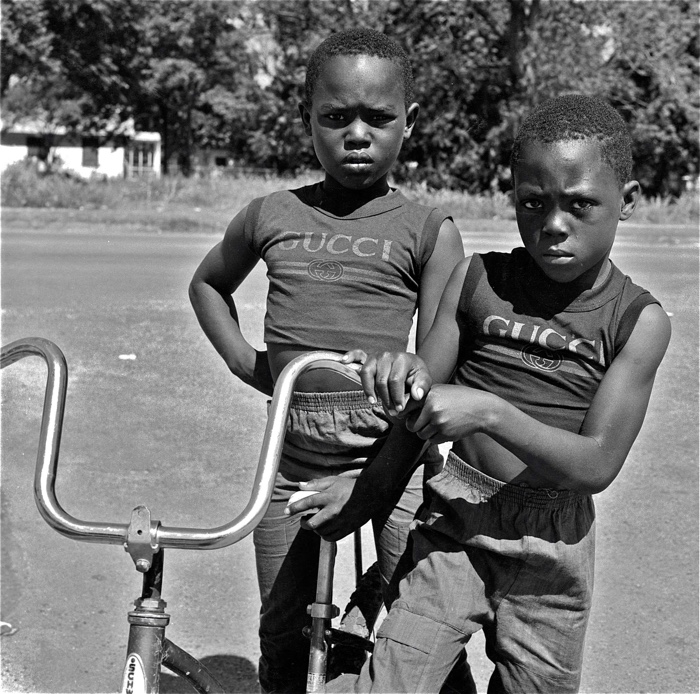
Earlie Hudnall, Gucci Brothers, 3rd Ward, Houston, TX, 1990. Photo ©Earlie Hudnall. Courtesy PDNB Gallery
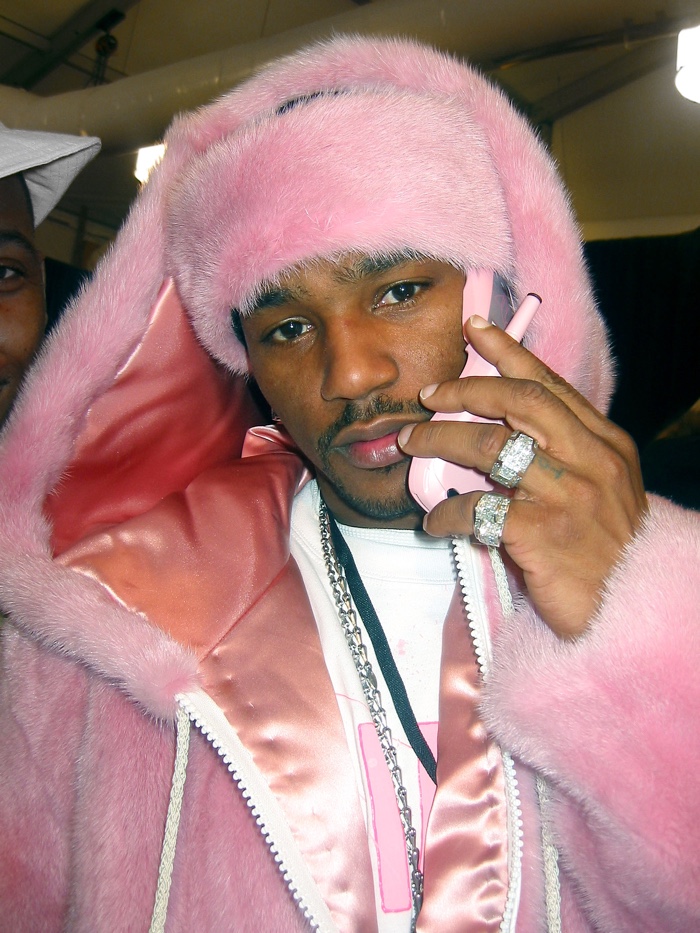
Djamilla Rosa Cochran, Cam’Ron. Photo: Djamilla Rosa Cochran/WireImage
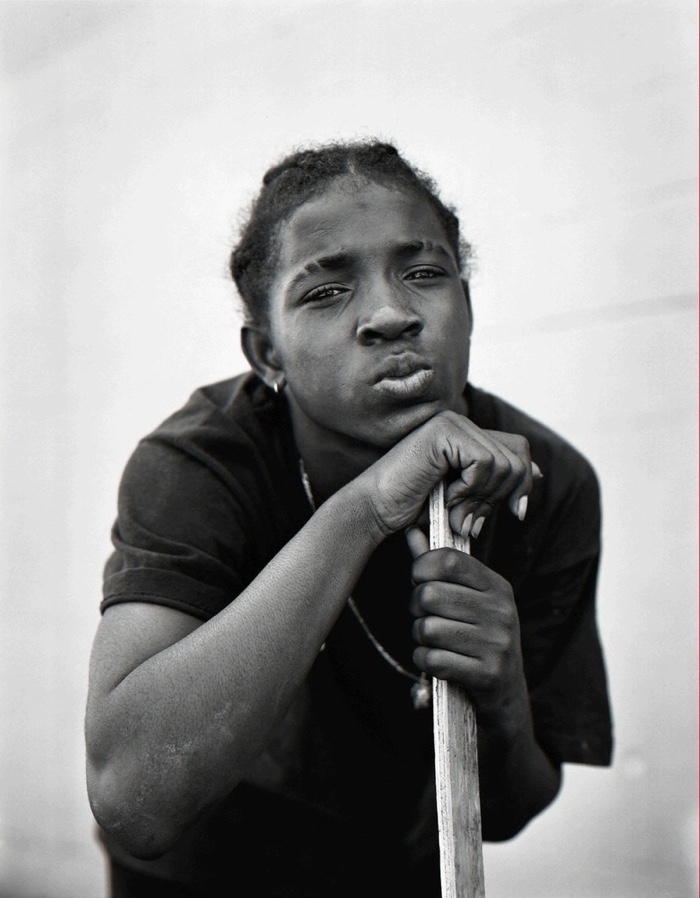
Dana Lixenberg, Snoop, 1993. From the series Imperial Courts 1993-2015. Courtesy of the artist and GRIMM Amsterdam, New York
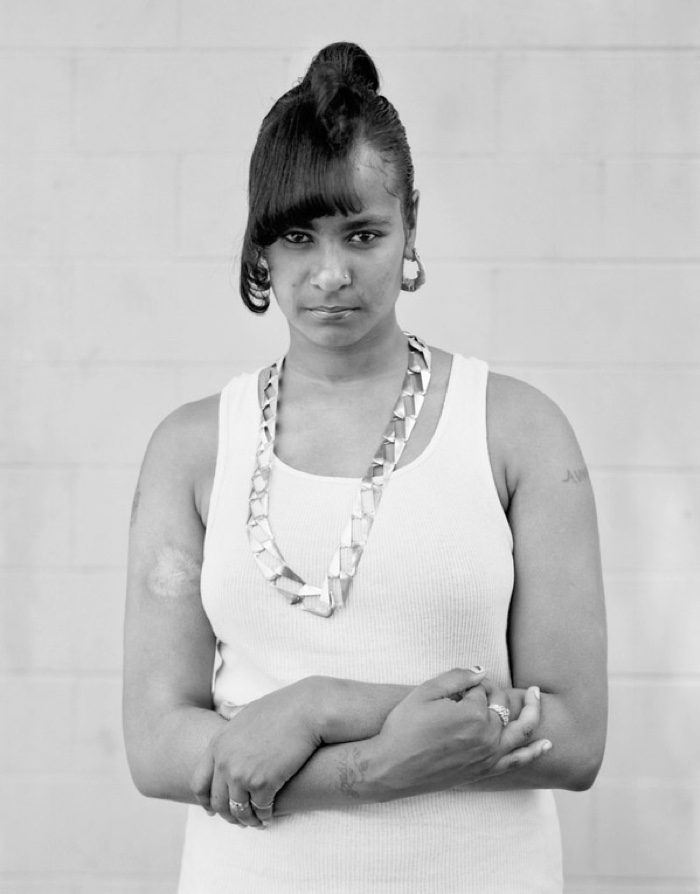
Dana Lixenberg, Annie II, 1993. From the series Imperial Courts 1993-2015
In 1992, Dana Lixenberg travelled to South Central Los Angeles to photograph a story on the riots that erupted following the acquittal of four LAPD officers filmed viciously beating Rodney King. What Lixenberg encountered there inspired her to revisit that part of the city, and eventually led her to meet a community whose evolution she portrayed over 22 years, focusing thus on individual lives that are ignored unless a tragedy strikes in their midst.
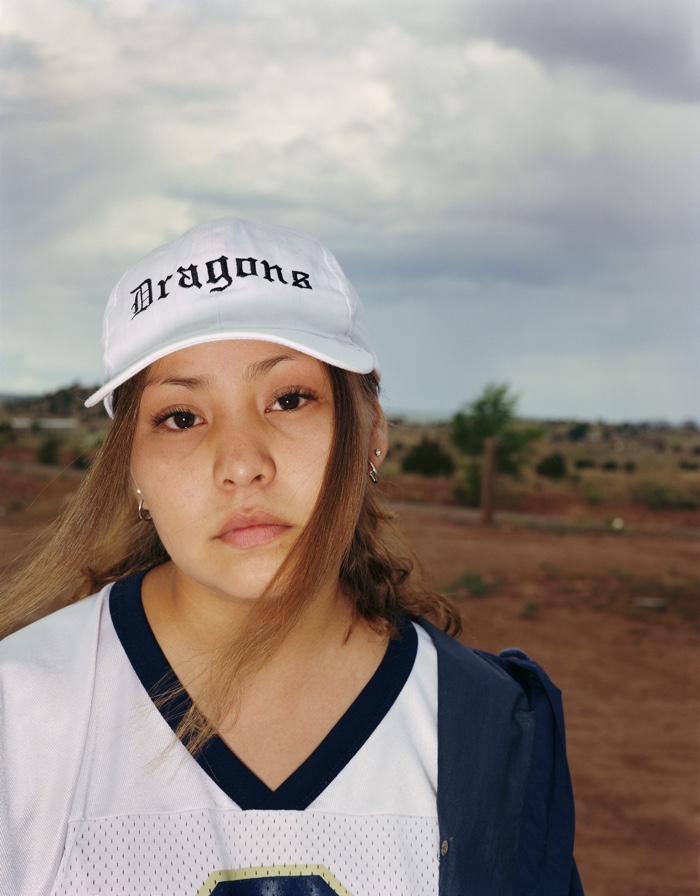
Dana Lixenberg, Untitled (Navajo Nation), 1998. Courtesy of the artist and GRIMM Amsterdam, New York
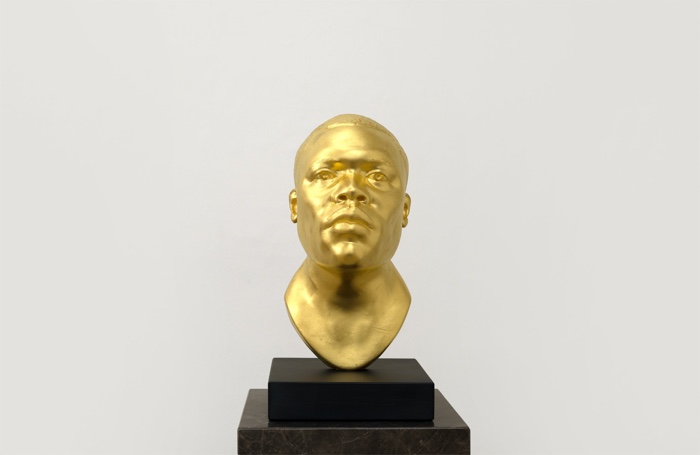
Thomas J Price, Untitled (Icon 2), 2017. Image courtesy the artist and Hales Gallery
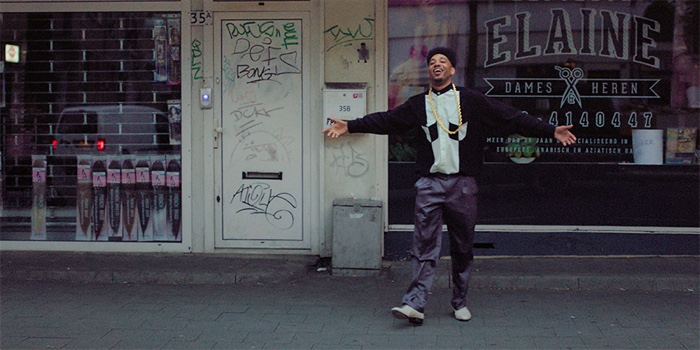
Victor D. Ponten, A Trip Down the Memory Block (video still), Big Daddy Kane, 2019
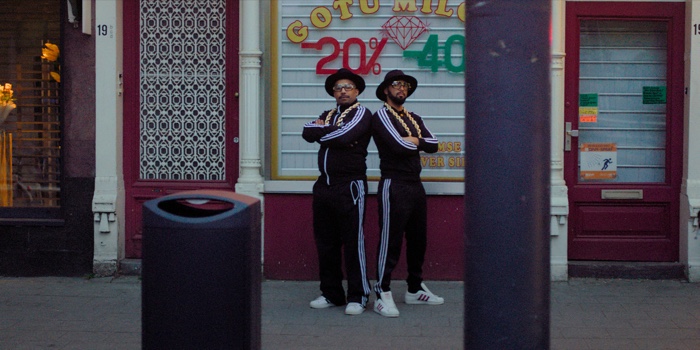
Victor D. Ponten, A Trip Down the Memory Block (video still), Run DMC, 2019
Victor D. Ponten’s video opens the exhibition and features sixty people from Rotterdam, dressed in outfits that symbolize the history of street wear and hip hop fashion.
Public Enemy, Fight The Power, 1989
Salt-N-Pepa, Push It, 1986
The Sugar Hill Gang, Rapper’s Delight, 1979
Grandmaster Flash & The Furious Five, The Message, 1982

Florian Joahn, 2018, model Tino Kamal, styling JeanPaul Paula
Street Dreams: How Hip Hop Took Over Fashion, curated by Lee Stuart, is on view at Kunsthal Rotterdam until 15 September 2019.

